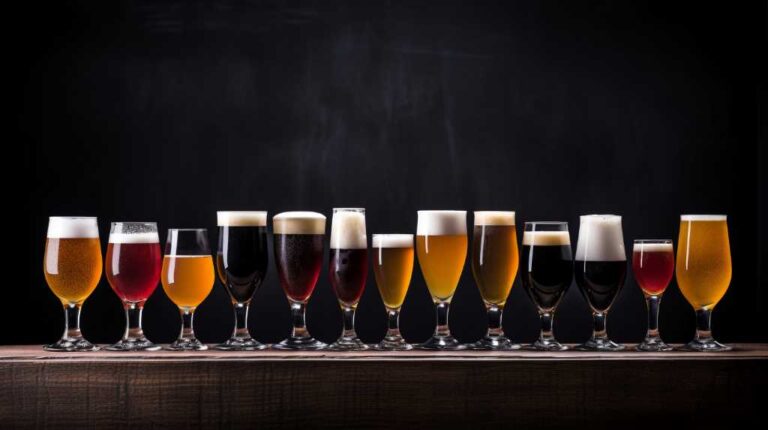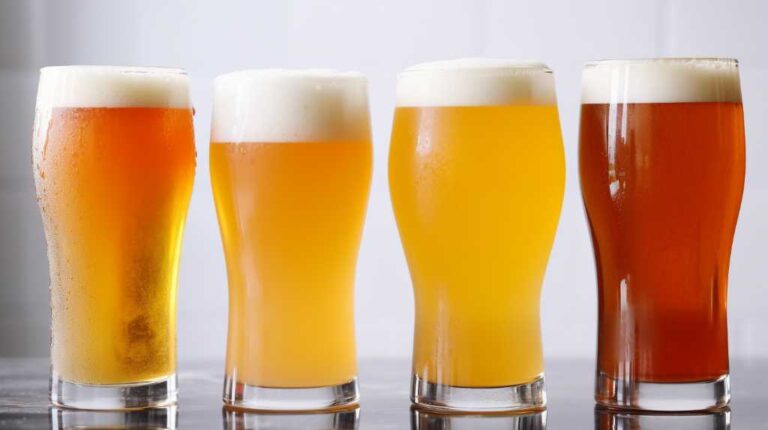Craft beer enthusiasts have always been fascinated by the ongoing battle between lagers and ales. These beer styles offer a wide range of flavors, each with its own unique taste profile, production methods, and visual characteristics.
In this article, we explore the world of lagers and ales, highlighting their differences in taste, popular examples, and the distinct processes involved in their creation.
Whether you’re an experienced beer connoisseur or simply curious about the intricate details of these beloved beer styles, join us as we uncover the captivating taste battle between lagers and ales.
Taste Profiles: Ales Vs. Lagers

Ales and lagers have distinct taste profiles that set them apart. Ales are known for their fruity and bitter flavors, while lagers aim for a clean and crisp taste. Ales have older, deeper, and richer flavors, giving them a unique richness.
On the other hand, lagers offer a clean taste that is often described as refreshing and easy to drink, showcasing their cleanliness. Ales have a more complex flavor profile with a range of fruity and hoppy flavors, while lagers focus on simplicity and smoothness.
These flavor differences make ales more suited for those seeking a bolder and robust taste experience, while lagers are favored by those desiring a lighter and refreshing beverage.
Familiar Lagers: Macro Vs. Craft

When it comes to familiar lagers, it’s important to differentiate between macro and craft brews.
Macro lagers like Budweiser, Coors, and Miller have been dominant in the beer market for a long time, especially before the craft beer revolution. These lagers are widely consumed and offer a clean and crisp taste that many beer enthusiasts enjoy.
On the other hand, craft lagers such as Tumer Pils, Yuengling, and Brooklyn Lager are gaining popularity and challenging the dominance of macro lagers. Craft breweries have played a significant role in the resurgence of lagers by offering a variety of styles and flavors that cater to different preferences.
Lager preferences have become a topic of debate among beer lovers, with some favoring the tradition and familiarity of macro lagers, while others appreciate the innovation and quality of craft lagers.
Different Types of Ales: Exploring Variety
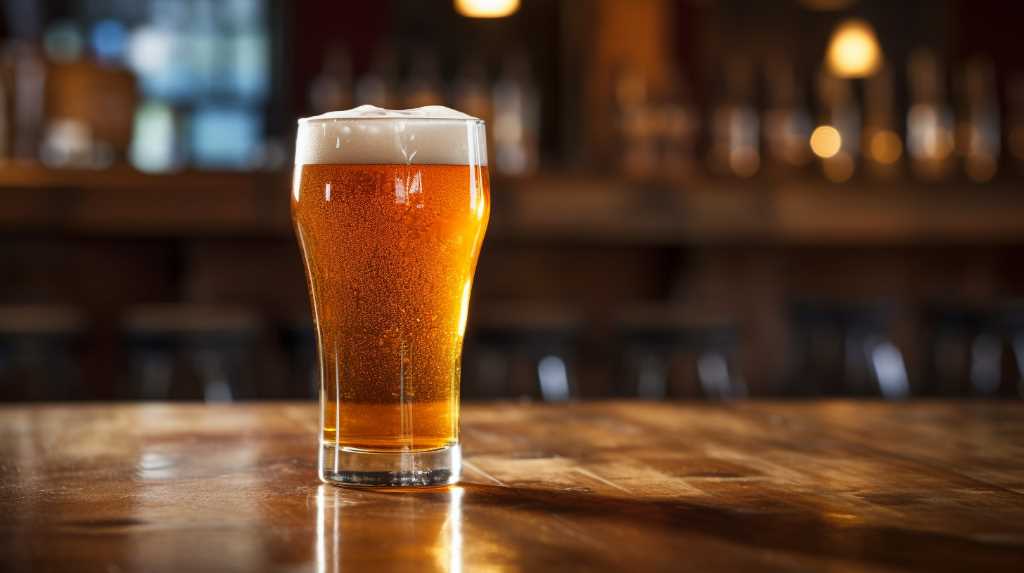
Ales offer beer enthusiasts a wide range of styles and flavors to explore. These beers are known for their fruity and bitter taste profiles, which provide a contrast to the clean and crisp flavors of lagers.
Some popular ale styles include Belgian style white ales, like Allagash, which offer a refreshing and citrusy flavor. There are also hoppy pale ales, like Sierra Nevada’s, known for their bold and aromatic hop characteristics.
Craft breweries have played a significant role in popularizing ales by pushing the boundaries of traditional styles and introducing innovative flavors. Whether you prefer a traditional English bitter or a modern New England IPA, the world of ales is full of possibilities, inviting you to discover new flavors that will satisfy your taste buds.
Production Differences: Fermentation Methods
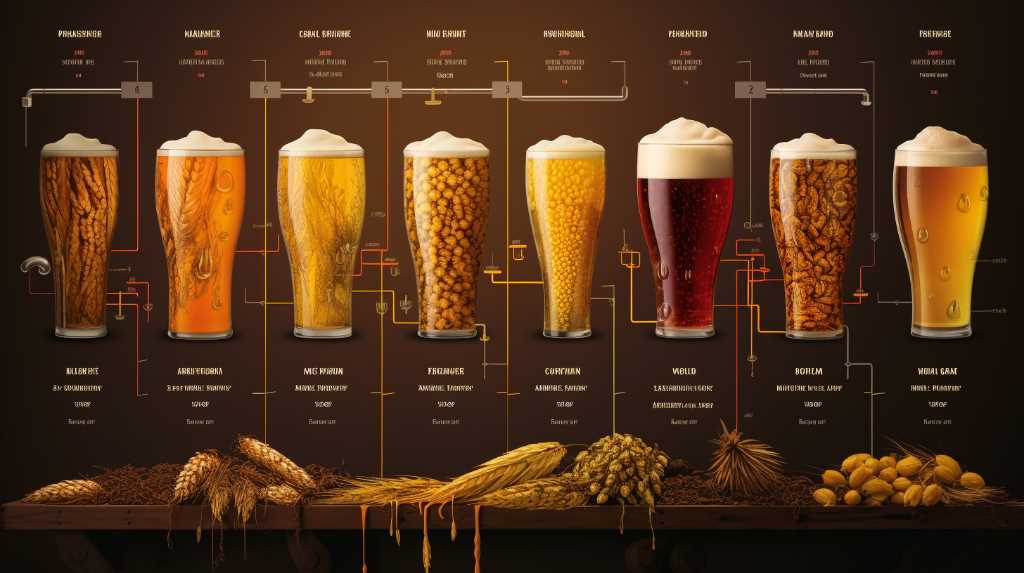
The way lagers and ales are fermented plays a crucial role in shaping their unique taste profiles. These distinctions can be attributed to the fermentation techniques and yeast strains used in each brewing process.
Let’s explore four key points to understand this better:
- Fermentation Techniques:
- Lagers undergo a process called bottom fermentation, where the yeast settles at the bottom of the fermenting vessel.
- Ales, on the other hand, undergo top fermentation, where the yeast floats at the top during fermentation.
- Yeast Strains:
- Lager yeast strains, like Saccharomyces pastorianus, thrive at lower temperatures and produce clean, crisp flavors.
- Ale yeast strains, such as Saccharomyces cerevisiae, prefer higher fermentation temperatures, resulting in fruity and sometimes spicy flavors.
Hazy Vs. Clear Beer: the Visual Appeal
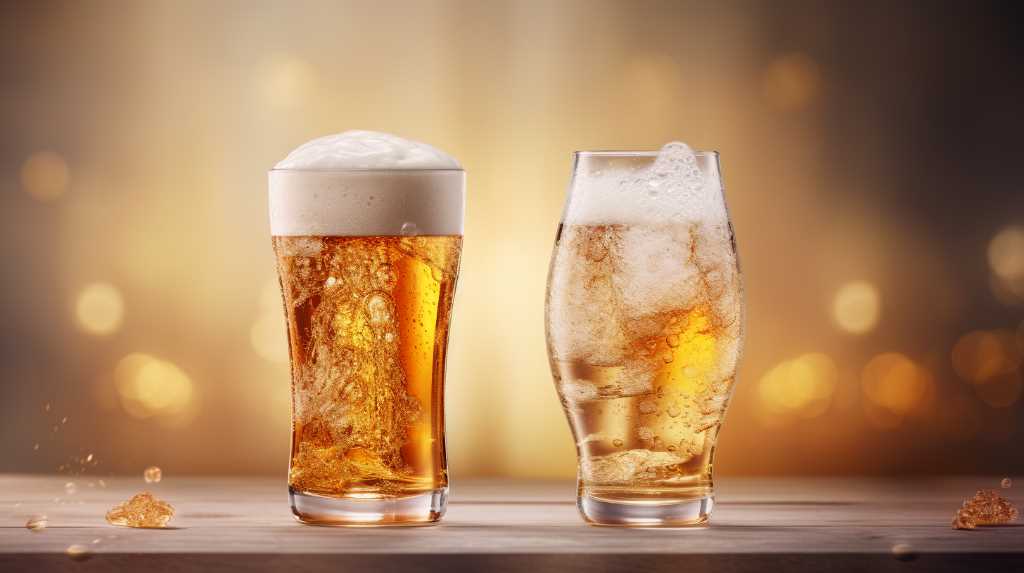
Hazy and clear beer have distinct visual characteristics that contribute to their overall appeal and aesthetic.
The appearance of beer can be influenced by various factors, such as brewing techniques and the presence of yeast. Traditional brewing methods typically result in clear beer because the lagering process allows the yeast to settle, creating a clear appearance.
In contrast, modern brewing methods, particularly in hazy IPAs, intentionally keep the yeast in suspension, resulting in a cloudy or hazy appearance. The type of yeast used also plays a role in the visual appeal of beer, as certain strains can contribute to haziness or clarity.
Pairing Tips: Finding the Perfect Match
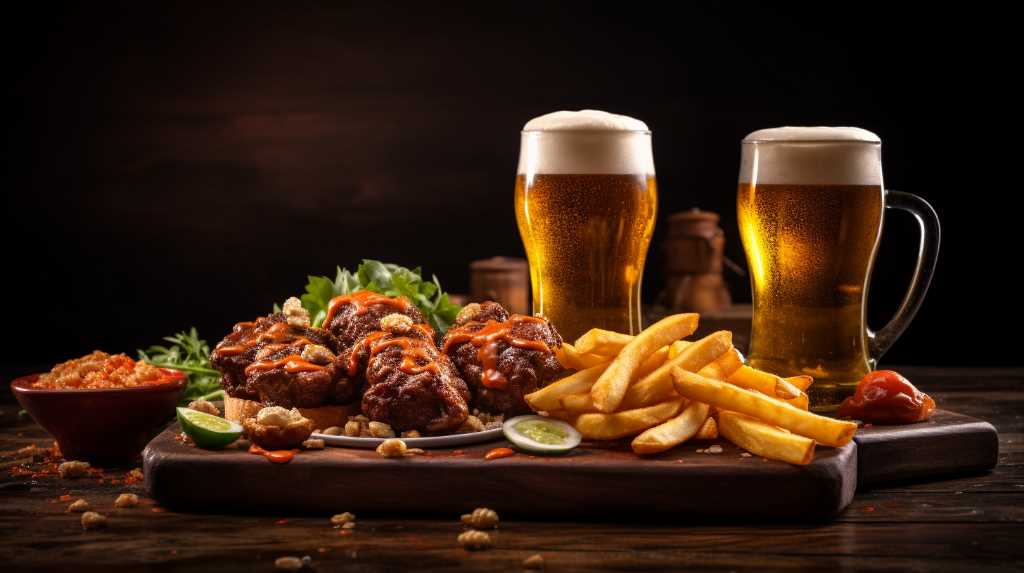
Pairing Tips: Finding the Perfect Match
When it comes to finding the perfect match, it’s important to consider the diverse flavors and characteristics of both lagers and ales. Here are some tips and flavor combinations to help you find that perfect pairing:
- Light lagers and seafood: The clean and crisp taste of lagers pairs well with delicate seafood dishes like grilled shrimp or fresh oysters.
- Hoppy ales and spicy foods: The fruity and bitter flavors of hoppy ales complement the heat of spicy foods, such as Indian curry or Mexican tacos.
- Malty ales and hearty dishes: Rich and deep-flavored ales like stouts or porters are a great match for hearty dishes like grilled steaks or chocolate desserts.
- Fruity ales and cheese: Ales with fruity notes, like Belgian wheat beers or fruit-infused ales, pair wonderfully with a variety of cheeses, from mild to sharp.
Remember, the key to finding the perfect match is to experiment and discover your own flavor combinations. Cheers to a tantalizing taste experience!
[Custom Quote]: ‘Pairing beer with food is an adventure for the taste buds. Don’t be afraid to explore and find your own unique combinations.’
Frequently Asked Questions
How Do Lagers and Ales Differ in Terms of Taste Profiles?
Lagers and ales have distinct taste profiles. Lagers strive for a clean and crisp flavor, while ales tend to be more fruity and bitter. However, there are exceptions and similarities between these two beer styles. It’s important to understand the differences in taste between lagers and ales to fully appreciate the variety and diversity of the beer world.
What Are Some Examples of Familiar Macro Lagers and Craft Lagers?
Some well-known macro lagers that you might be familiar with include Budweiser, Coors, and Miller. These beers have been around for a long time and are often found in many bars and restaurants. On the other hand, craft lagers are becoming increasingly popular among beer enthusiasts. Examples of craft lagers include Tumer Pils, Yuengling, and Brooklyn Lager. Craft lagers offer a wide range of styles and flavors, and they are often brewed by smaller, independent breweries. Whether you prefer a classic macro lager or want to try something new with a craft lager, there are plenty of options to explore and enjoy.
What Are Some Different Types of Ales and Their Flavors?
Different types of ales offer a wide range of flavors. Belgian ales are known for their haziness and have distinct characteristics such as fruity esters and spicy phenols. IPA variations, like hoppy pale ales, showcase intense hop flavors and aromas. These different types of ales provide a diverse and enjoyable drinking experience, allowing beer enthusiasts to explore a variety of taste profiles. Whether you prefer the fruity and spicy notes of Belgian ales or the bold hop flavors of IPAs, there is an ale out there to suit every palate. So, grab a pint and savor the flavors of these unique brews.
What Are the Main Differences in the Production Process Between Lagers and Ales?
The production process for lagers and ales differs mainly in fermentation and temperature control. Lagers undergo bottom fermentation at lower temperatures, while ales use top-fermenting yeast strains at higher temperatures. This distinction in fermentation methods results in distinct flavor profiles and characteristics for each type of beer. By understanding these differences, brewers can create a wide variety of beer styles to cater to different tastes and preferences. Temperature control is crucial in ensuring the desired flavors and aromas are achieved during the brewing process. Brewers carefully monitor and adjust the temperature to maintain the optimal conditions for yeast activity and flavor development. Overall, the variations in production techniques contribute to the diverse and flavorful world of beers.
Why Do Some Beers Appear Hazy While Others Are Clear, and What Factors Contribute to This Visual Difference?
The hazy appearance of some beers can be attributed to various factors, including the suspension of yeast, protein haze, and brewing techniques. These factors play a significant role in determining the clarity of the beer and contribute to its visual distinction. Understanding these factors helps us appreciate the complexity and craftsmanship involved in beer production.
Conclusion
The battle between lagers and ales in the world of craft beer offers an intriguing exploration of taste profiles, production methods, and visual characteristics.
Lagers have a clean and crisp flavor, while ales offer deeper and richer notes, resulting in a diverse range of flavors for beer enthusiasts. Understanding the differences between these two styles, as well as the various types of ales available, can enhance the drinking experience and open up a world of possibilities for pairing with different foods.
Additionally, the visual appeal of hazy versus clear beer adds another layer of interest to the craft beer scene.
Overall, the taste battle between lagers and ales provides countless opportunities for discovery and enjoyment in the world of craft beer.
